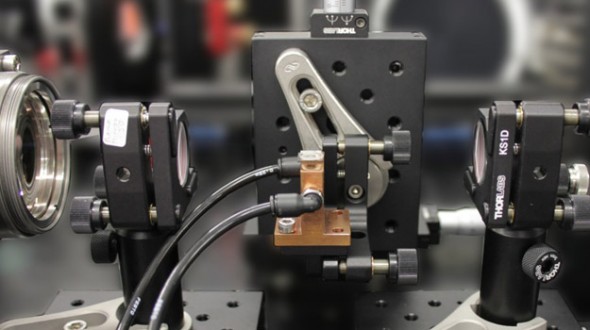
Researchers are interested in diamond-based lasers mainly for their ability to transmit power over long distances with very little interference. They might have important applications in laser ranging, space communication, and weapons.

Those borderline illegal laser pointers you can buy online can output a few watts of power at the high end, but how about a whopping 380 watts of laser power? That's about 400,000 times more powerful than a conventional laser pointer, and it's thanks to a diamond lens developed by scientists at the MQ Photonics Research Centre and the Fraunhofer Institute. Previous diamond lasers had a peak output of about 20 watts, so this is a big step indeed.
Researchers are interested in diamond-based lasers mainly for their ability to transmit power over long distances with very little interference. They might have important applications in laser ranging, space communication, and — let's be honest — weapons. At 380 watts, the newly developed diamond laser has enough power to slice through steel. That kind of destructive power could be put to positive use clearing space debris as well.
The wavelength of this new diamond laser is 1240nm, quite a bit longer than regular red lasers, which are usually in the 700nm to 800nm range. The longer wavelength means there's less interference with the atmosphere and it's less dangerous to humans, surprisingly. These wavelengths don't penetrate the front of the eye as well, so there's less damage to the retina should one be shined (momentarily) at your face. You still don't want that, though.
The key to this advancement in the power of diamond lasers is better manufacturing techniques. The diamond used in this laser wasn't hauled out of the ground somewhere, it was created in a lab. Scientists can now create more optically perfect synthetic diamonds than anything you'd dig up, and they'll only get better as time goes on. Researchers also suspect it will be possible to tune diamonds to a wide range of wavelengths, increasing usefulness even further.